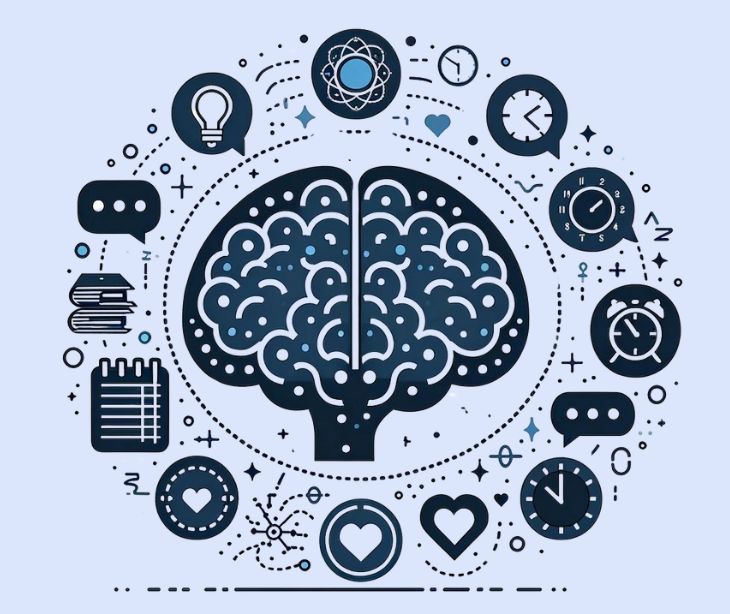5 min read
How to improve traditional therapy models using text messaging
Kirsten Peremore
June 28, 2024

Traditional therapy models are the central point of treatment used by mental health professionals. While effective, integrating more modern approaches serves as an integrated method to cover the gaps left by traditional therapy.
What are the traditional therapy models?
Traditional therapy, often held in an office where both the therapist and the client meet face to-face, is a popular method for addressing mental health issues. The core of this therapy style lies in building a connection between the therapist and the client through regular, scheduled meetings.
One of the main principles of traditional therapy is the therapeutic alliance, the trust and collaborative partnership developed between the therapist and the client. This relationship is foundational to exploring personal challenges and facilitating change in a safe, supportive environment.
Therapists prefer this method because it allows them to observe non-verbal cues, such as body language and facial expressions, which are often as telling as the words spoken. This rich, direct interaction helps therapists provide more tailored and immediate responses.
The common forms of traditional therapy
- Cognitive behavioral therapy (CBT): Focuses on identifying and changing negative thought patterns and behaviors.
- Psychodynamic therapy: Emphasizes understanding the influence of the past on current behavior, exploring unresolved conflicts and unconscious thoughts.
- Humanistic therapy: Centers on personal growth and self-development by emphasizing a person's capacity for self-direction and understanding of one’s own feelings.
- Interpersonal therapy (IPT): Aims to improve interpersonal relationships and communication patterns to help reduce psychological distress.
- Behavioral therapy: Focuses on modifying harmful behaviors through techniques like conditioning and reinforcement.
- Family therapy: Involves treating the family as a unit to resolve issues and improve communication and dynamics within the family system.
- Group therapy: Provides a supportive environment where individuals can explore their issues with peers under the guidance of a professional therapist.
- Integrative or holistic therapy: Combines elements from different therapeutic disciplines to suit the unique needs of the individual client.
See also: Keeping updated on exposure hierarchies with HIPAA compliant email
The disconnection faced between appointments
The time between therapy appointments can often lead to a sense of disconnect for clients, which might dilute the emotional clarity and progress achieved during a session. A journal article published in Community Mental Health Journal titled Reassessing the Mental Health Treatment Gap: What Happens if We Include the Impact of Traditional Healing on Mental Illness?, provided the following view on the shift from traditional mental health treatment, “Mental health professionals, activists, and service users have called for moving away from this monocultural view only including Western mental health healing practices, and they ask for a more contextualized approach to address the worldwide mental health treatment gap.”
This gap can be a detriment to forms of therapy used to treat deep-seated emotional issues like trauma, anxiety, or depression. These conditions benefit immensely from consistent, frequent interaction because they rely heavily on the therapist and client building a secure, trusting relationship. Each session typically builds on the last, helping clients unpack their experiences and develop coping mechanisms gradually.
When appointments are spread too far apart, clients struggle to maintain the emotional gains they made, as the immediacy and relevance of insights can fade over time. Subsequent sessions feel like starting over rather than continuing from where the last one ended, thereby making the therapy feel fragmented. These breaks can hinder the development of a strong therapeutic alliance.
See also: Can patients with dementia provide consent under HIPAA?
How text messaging improves traditional therapy models
When done right, text messaging not only alleviates the sense of isolation clients might feel but also enhances their engagement with the therapeutic process. It provides a real-time, accessible form of support, offering clients a tangible sense that their therapist is invested in their well-being, even outside of scheduled session times.
This method of communication can create a boundary issue if not used correctly. A study published in the Canadian Journal of Counselling and Psychotherapy explains one of the main issues that stem from text messaging when not used correctly, “One such difficulty is the possible development of dual relationships between clients and counseling professionals as a result of communicating by these means.”
Guidelines used include setting specific times when messages are appropriate, the type of content shared (e.g., motivational quotes, homework reminders, or brief check-ins), and how clients can expect to use this tool effectively.
The ways it can be applied
- Therapists can encourage clients to send daily or weekly texts rating their mood or anxiety levels on a predefined scale. This data can help therapists monitor trends in the client’s emotional state, offering insights that can be discussed in more depth during sessions.
- For clients working on specific behavioral changes, such as those dealing with addiction or compulsive behaviors, text messages can be timed to coincide with known challenging times. For example, sending a motivational text during the time of day a client is most likely to face temptation can provide a much-needed boost or reminder of their coping strategies.
- Texts can be used to prompt mindfulness practices. For instance, therapists might send a midday text reminding the client to engage in a brief mindfulness exercise.
- To deepen self-reflection, therapists can send thought-provoking questions via text that clients are encouraged to think about and respond to. These questions can relate to recent session topics or be aimed at preparing the client for upcoming discussions.
- Texts can be a quick and effective way to share resources such as links to articles, videos, podcasts, or apps that are relevant to the client’s therapeutic goals. This can help clients feel supported and engaged in their therapy work outside of sessions.
- For clients dealing with social anxiety or specific phobias, receiving a supportive text before or during a challenging event (like a social gathering or public speaking engagement) can provide encouragement and practical tips previously covered in therapy.
- Celebrating milestones or acknowledging progress through a text can boost a client's morale and motivation. This is necessary in long-term therapy, where progress might be slow and hard to notice on a day-to-day basis.
- For clients at risk of self-harm or experiencing severe mental health crises, text messaging can be part of a broader safety plan. Quick check-ins or reminders of their safety plan components (like contacting a friend or using a specific distraction technique) can be useful during high-risk times.
Best practices
- Use secure, HIPAA compliant text messaging platforms designed for healthcare communications.
- Before incorporating text messaging, both therapist and client should agree on clear guidelines covering the purpose, frequency, and content of texts. This includes establishing acceptable hours for sending texts, ensuring messages are professional and related to therapy goals.
- Text messages should be purposeful and focused on therapy goals. They can be used to remind clients of homework, reinforce strategies discussed in sessions, provide encouragement, or prepare clients for upcoming therapy topics. Avoid casual or non-therapeutic communications.
- Instead of random, ad-hoc messages, establish a routine or schedule for when texts will be sent (e.g., motivational Mondays, weekly check-ins every Friday). Scheduled messaging helps manage expectations and maintains boundary clarity.
- Periodically remind clients about the purpose and boundaries of text messaging within therapy. Reinforcing these boundaries can help prevent dependency and ensure that the communication remains therapeutic.
- Before a session, therapists might send a text to help clients prepare, such as prompting them to think about a topic they want to discuss. This makes the session more efficient and client-focused.
- After sessions, send a text encouraging clients to reflect on what was discussed. This could include guided questions that help clients consolidate their insights or plan how to apply session learnings in their daily lives.
FAQs
Is consent necessary for text messaging?
Yes.
What is cognitive behavioral therapy?
Cognitive behavioral therapy is a form of psychotherapy that helps people manage problems by changing the way they think and behave.
What makes text messaging HIPAA compliant?
Text messaging is HIPAA compliant when it includes encryption, secure data handling practices, and safeguards to protect patient confidentiality.
Subscribe to Paubox Weekly
Every Friday we'll bring you the most important news from Paubox. Our aim is to make you smarter, faster.



